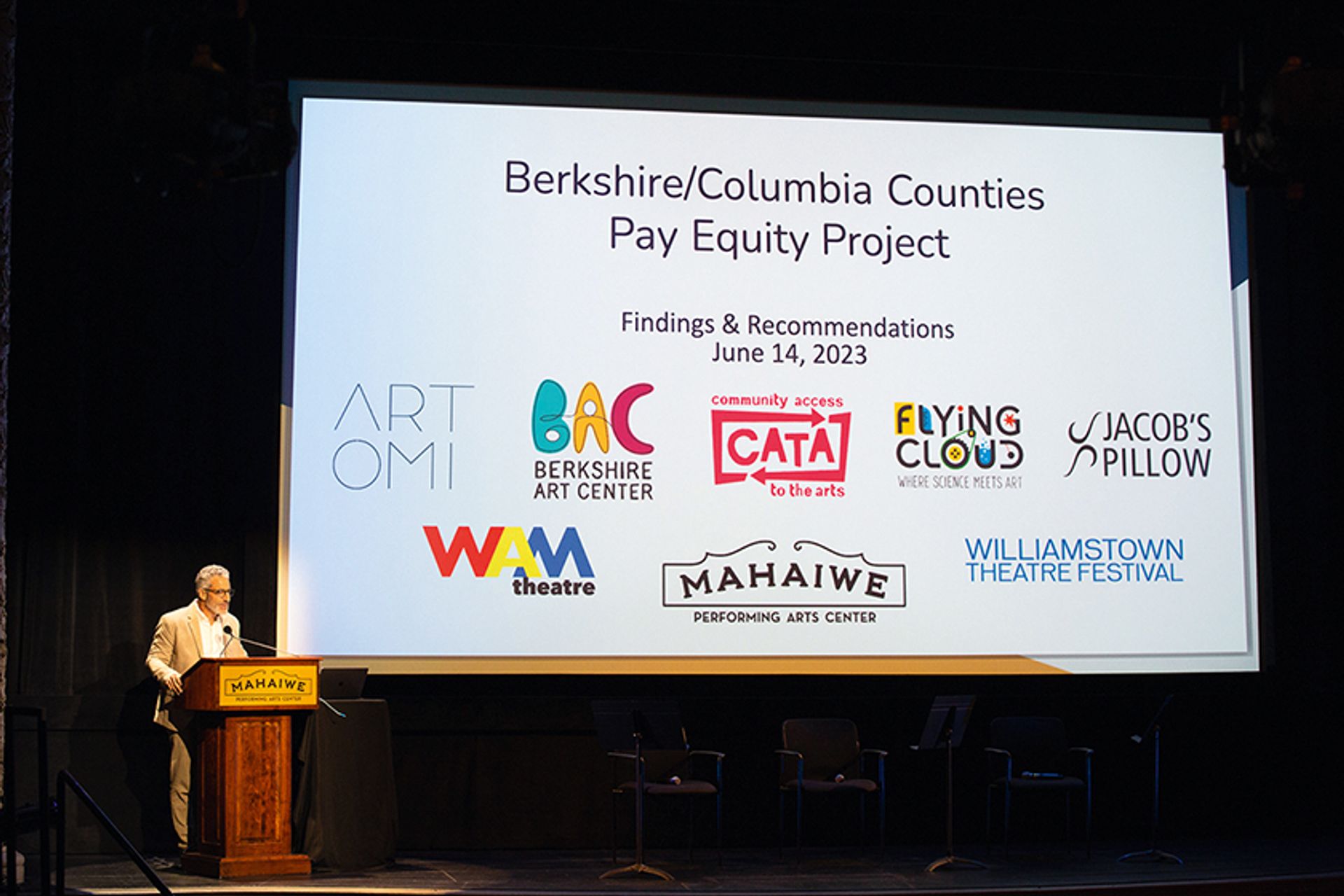Low wages leave US arts workers with few prospects

Passion does not pay the rent. Entry- and mid-level workers at US art institutions often earn wages below the cost of living. A pay equity project in the Berkshires is attempting to change that pay to a living wage.
A region where tourism is largely fuelled by the arts, drawing millions of visitors annually, the creative corridor involved in the pay equity project stretches from Berkshire County in western Massachusetts, to Columbia County in eastern New York state’s Hudson Valley. Only 39% of entry- and mid-level workers can imagine a future employed by an art or culture institution in the region, according to the recent Berkshire/Columbia Counties Pay Equity Project Report.
“We’re seeing this conversation across the country,” says Janis Martinson, the executive director of the Mahaiwe Performing Arts Center in Great Barrington, Massachusetts. “Non-profit organisations are contributing to the [gross domestic product] far ahead of its compensation to its employees. It’s on the organisations to do better for the employees who work so hard and with such dedication.”

Aron Goldman presents findings of the report, which canvassed more than 900 staffLeigh Davis
Attracting and retaining talent to keep a creative economy afloat requires a “narrative shift” away from viewing arts and culture workers as luxuries and instead as essential workers, says Aron Goldman, the report’s author. “As long as working in the arts is considered a privilege, only the privileged will work in this field.”
Among the 38 organisations that submitted data for the report—institutions with annual operating budgets ranging from $4,000 to $19m, including Art Omi arts centre in Columbia County, New York State and the Berkshire Art Center in Stockbridge, Massachusetts, and collectively employing almost 1,000 people—nearly one third (29.5%) of employees are full-time but earn less than $50,000 annually. This is well below the average annual salary in Massachusetts this year of $76,600 and, in New York, $74,870, according to Forbes data.
All sacrifice, few benefits
Only about half of respondents reported that their pay completely covered their housing, transportation, food, healthcare, utilities and recreation costs. Between 25% and 48% of entry- and mid-level workers lack even the most common types of benefit, such as health insurance, retirement plans, dental insurance and paid time off. As a result, most entry- and mid-level workers have multiple jobs—not by choice, but out of necessity.
A significant portion of the 67-page report is devoted to anonymous employee responses to open-ended questions. Respondents across the board expressed a sense of conflict between their love of the arts and the financial realities of trying to survive on pay that comes in below a living wage.
“Paying someone so little puts them in a perpetual state of worry, unease and hopelessness,” one respondent said. Another said the ratio of “rent to income is becoming more impossible… Owning a house seems impossible.” Another said: “I love working for the arts, but as I get older, I need to be saving more money, and it’s very hard to do with my salary.”
“We must start the work to get to more than just a liveable wage, more than just the bare minimum for survival”
Martinson says she expected comments about employees having trouble making ends meet, but did not expect “to hear about the physical and mental health effects and relationship stress” caused by this economic precarity. “Those are very real symptoms of something we need to fix. It calls on our conscience to fix that.”
“We can’t just say, ‘Oh, it’s too hard to do it’,” says Jeremy Adams, the co-executive director of Art Omi. “We have to hold our feet to the fire to say, ‘This is going to happen.’ We know we’re not going to be able to flick a switch to get salaries where we want them to be, but [we must] start the work to get to more than just a liveable wage, more than just the bare minimum for survival.”
Rich culture, poor reward
At Jacob’s Pillow, a performing arts centre, residency programme and school in Becket, Massachusetts, the administration’s focus for the next three years will be on creating a structure of salary grades matching the market equivalent. “Our business models need to be adjusted,” says the organisation’s deputy director A. J. Pietrantone. “It’s not a one-fix thing, but a long-term evolution we need to take on.”
A pay equity summit to track what changes the region’s arts organisations have made is in the works for 2024. “Organisations can share their stories over the past year—wins, challenges and where they crashed and burned,” says Kristen van Ginhoven, the co-founder and artistic director of WAM Theatre in Lenox, Massachusetts. She and Aron Goldman are taking the report on the road and are already scheduled to make presentations on board meeting agendas at the invitation of regional arts and culture institutions. “Because we’re getting regional momentum and speaking as a group, we can apply for grants and advocate as a cohort for financial aid for each organisation,” says Van Ginhoven.
For Martinson, the report has underlined the discrepancy between the region’s rich cultural offerings and the poor compensation received by many of the people making it possible. “It’s important for people to know that the arts they are enjoying are being created in a way that is respectful of the people working to create it,” she says.“I genuinely believe that is the expectation of people consuming the art and if we don’t tell the story, they won’t know any difference.”
Source link





